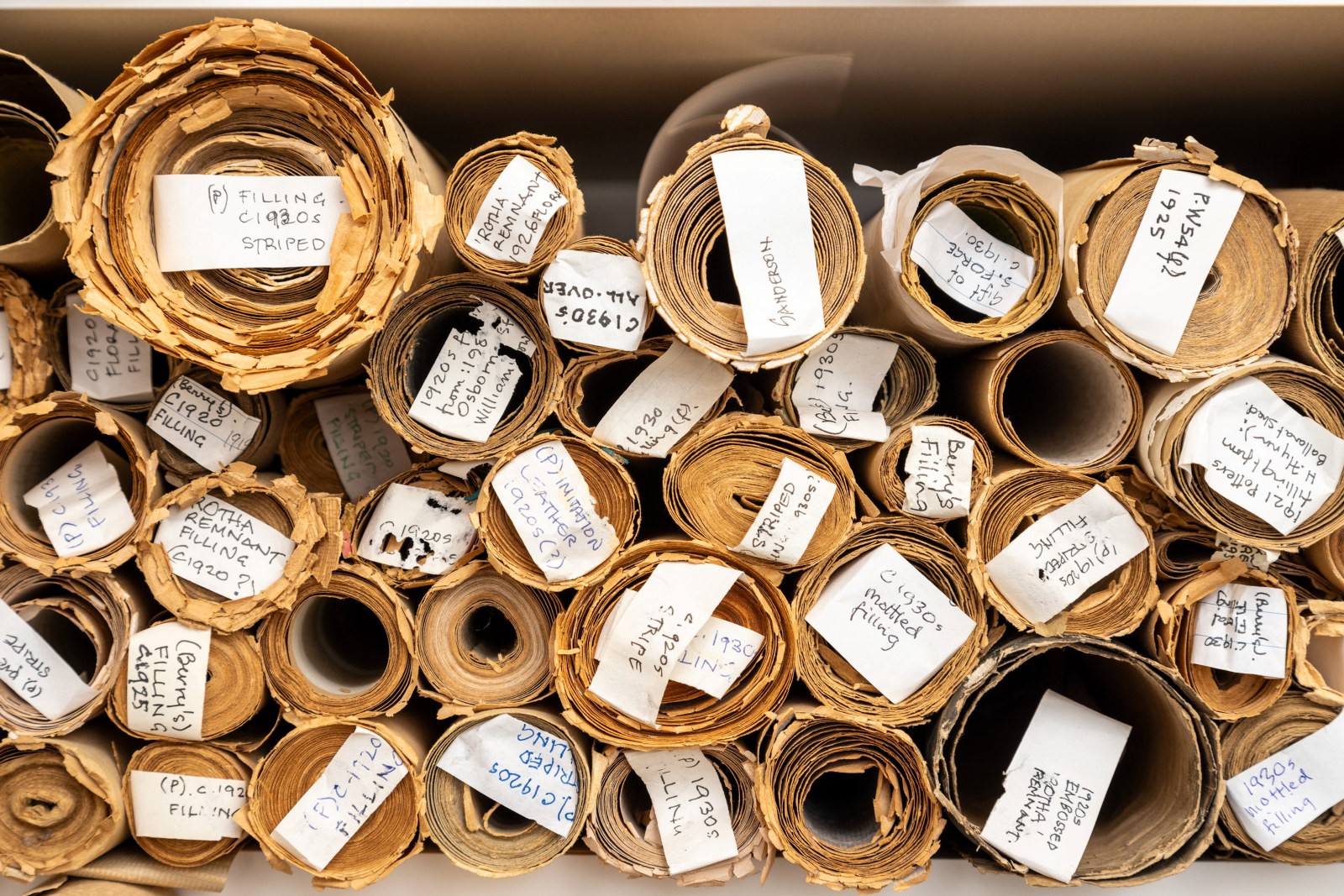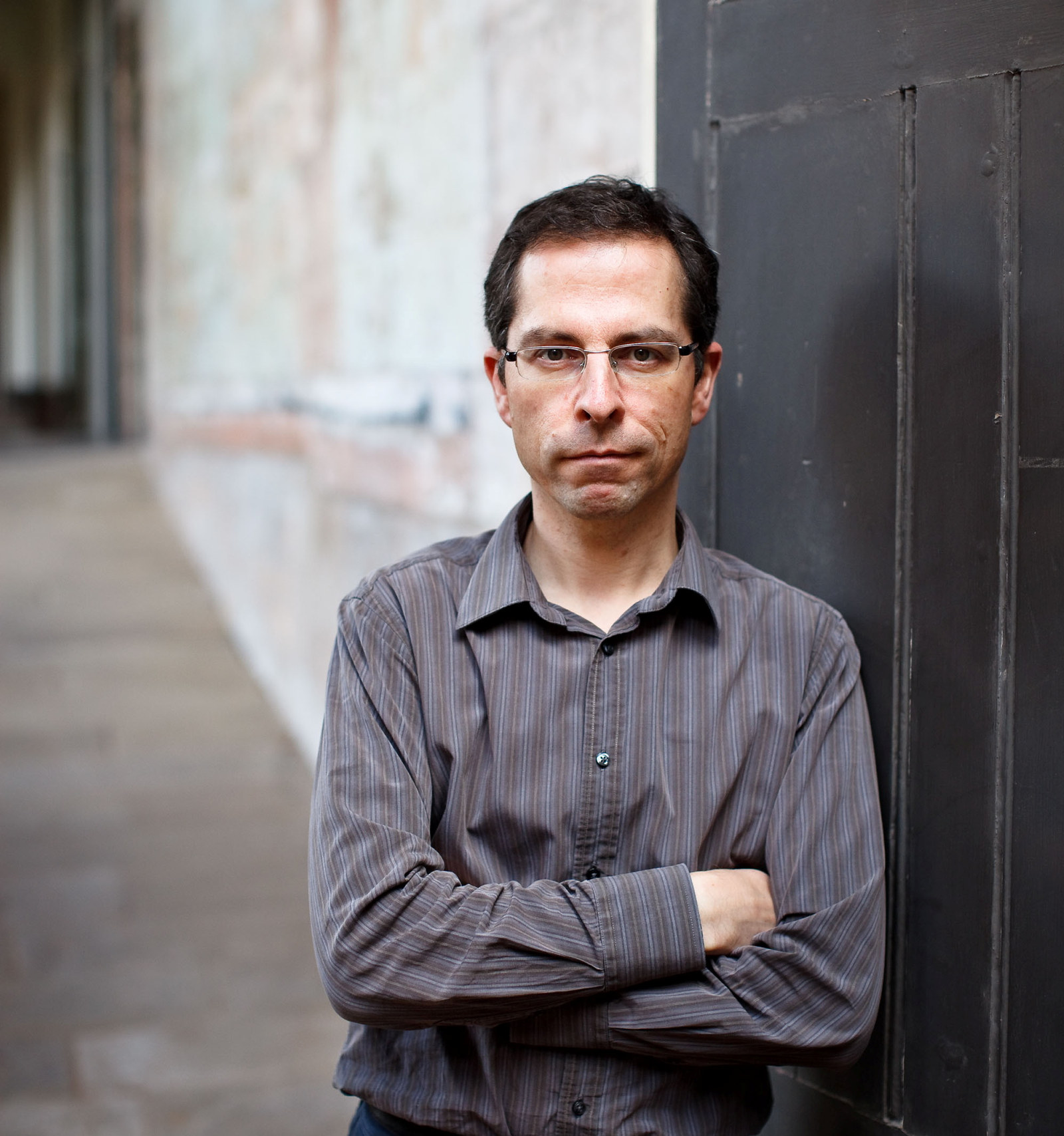Wallpaper in the spotlight
Published on Wednesday 18 October 2023
Following the generous donation of over 3000 wallpapers from John and Phyllis Murphy, we are excited to start cataloguing, digitising and documenting this valuable collection to better understand its contents and make it available to the public.
Our first job was to move this massive collection to its new home. It was carefully packed, boxed and transported to our storage facility at the Museums Discovery Centre in Castle Hill. The wallpapers immediately underwent conservation treatment to reduce potential damage from insects and pests – this is typically done by securing the material in plastic bags, then freezing it for at least seven days to kill all life stages of potential pests. Once the treatment is finished, the material is ready for cataloguing and digitisation.
Cataloguing the collection
Although cataloguing occurs for all new acquisitions, the sheer magnitude of the John and Phyllis Murphy collection makes it a particular challenge. Collections and curatorial staff undertook an initial process of sorting and discovery to better understand the depth and breadth of the collection. Importantly, to keep the wallpapers clean and safe during handling, staff wear nitrile gloves or make sure their hands are freshly washed to prevent the transfer of any natural oils or dirt.
The aim of the cataloguing process is to create order from a jumble of seemingly unrelated parts. It allows for collections to be quickly located and accounted for, and ultimately helps us understand the nature of the collections by drawing parallels between different types, styles and makers. Fortunately for such a large collection, its donor, Phyllis Murphy, had already created her own hand-written catalogue and had placed wallpapers into categories to make the collection more manageable.
Our cataloguing process, led by registrar Alex Shapley, started with selecting wallpaper rolls from the four boxes of floral friezes which included wallpapers in a variety of floral designs as well as in the art nouveau style. The cataloguing process involves assigning a unique numerical identifier to each wallpaper and then describing the physical and visual characteristics such as material, colour, inscriptions, maker, style and motifs, in order to aid with identification. Alex then takes a reference photograph of the wallpaper, which is linked to the object record on the collection management system, until such time that it can be replaced by a professional digital image.
Digitising the collection
Digitisation has become increasingly critcal to collection care, management and access. Coordinated by Julieanne Rabier with help from Nyssa Mitchell, the process begins by examining the condition and type of items to be digitised to determine the order that the material should be photographed. The team works with a professional photographer who sets up the camera for best results. In the case of wallpapers, this usually means photographing from above, with lighting often needing adjustment from item to item to capture at least some of the subtle textures of each wallpaper. Items are grouped by size to minimise camera height adjustment and the aim is to capture at least one full pattern repeat of each wallpaper. Extra care is taken in handling historic wallpapers as they are often fragile and prone to damage.
The first step was to photograph a small selection of wallpaper rolls and smaller lengths. This helped to iron-out potential difficulties in the digitisation process. Once the final images are processed and uploaded to our digital asset management system, the Collection Digitisation team can add information to the file, link the images to their object record and publish on the MHNSW online catalogue. Making the wallpapers accessible online means that the original wallpapers will not need to be handled as often, ensuring that they will be preserved well into the future.
During the course of cataloguing and digitisation the John and Phyllis Murphy collection, we are bound to surface gems in the collection that will help us to interpret them more fully in the future. Although it will be a long road to complete, the variety of designs and formats of the wallpapers in the collection make the job endlessly fascinating. If the staff ever get weary, staring at the newly acquired wallpapers is bound to give them extra energy.
Related

Wallpaper
Wall to wall: a marvellous wallpaper collection
A remarkable donation of over 3,000 wallpaper samples by John and Phyllis Murphy adds to our existing collection to form Australia’s largest repository of historic wallpapers
